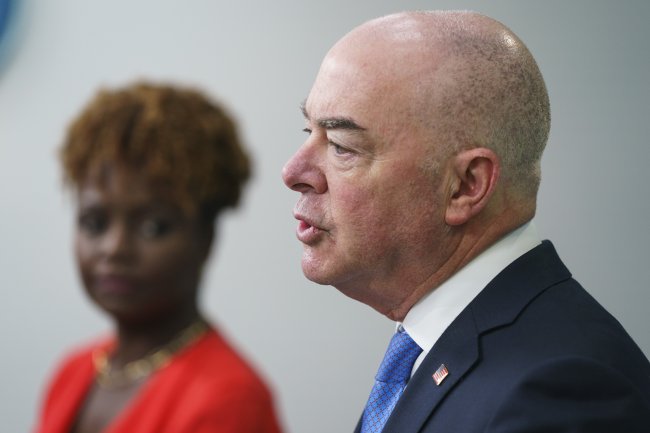Millions Are Under Air-Quality Alerts Again as Canada Deploys Troops to Fight Wildfires
Smoke from the country’s worst wildfire season ever could linger through fall, forecasters say Millions of people were under air-quality alerts Monday as smoke from Canadian wildfires drifted into the U.S. again, and several states were under an excessive heat warning. Photo: Amr Alfiky/Reuters By Alyssa Lukpat Updated July 17, 2023 8:02 pm ET Millions of people from the Great Plains to the Northeast were under air-quality alerts Monday as smoke billowed into the U.S. again from Canadian wildfires that may continue to rage into the fall. Forecasters said smoke from w

Millions of people were under air-quality alerts Monday as smoke from Canadian wildfires drifted into the U.S. again, and several states were under an excessive heat warning. Photo: Amr Alfiky/Reuters
Millions of people from the Great Plains to the Northeast were under air-quality alerts Monday as smoke billowed into the U.S. again from Canadian wildfires that may continue to rage into the fall.
Forecasters said smoke from western Canada was sweeping from Montana across the Midwest and into New York. The air quality was predicted to be unhealthy in some smoke-covered areas through Tuesday, but potentially for several more days along the East Coast, according to the National Weather Service.
States including Michigan and New York are under air-quality alerts as the smoke again was poised to upend summertime activities.
The air-quality index, a measure of the pollutants in the sky, was predicted to reach unhealthy levels of at least 151 Monday in parts of Iowa, Ohio, New York and Pennsylvania, according to AirNow, a government tracking site. A number above 300 is considered hazardous.
“If you don’t see it looking as bad as it did a few weeks ago when the numbers hit 400, it doesn’t mean that it’s safe for you to breathe,” New York Gov. Kathy Hochul said Sunday.

Smoke rose from a fire in Alberta, Canada, earlier this month.
Photo: ALBERTA WILDFIRE/via REUTERS
Hazy skies have become a familiar scene in the northern U.S. this summer. Winds have blown the smoke from Canada, which is in the middle of its most destructive wildfire season ever. Almost 900 wildfires are currently burning across the country and more than half of them are out of control, according to Canadian fire officials.
Canada is deploying federal troops to fight fires in the province of British Columbia, where more than a third of the country’s wildfires are burning, the Canadian government said Sunday.
Canada’s wildfire season typically runs from April to October, officials said, subjecting Americans to unhealthy air quality any time the winds bring the smoke south. Smog has blanketed the skies in the U.S. several times in June and July.
Americans likely won’t get a reprieve from the smoke until September, when rain in Canada should start to douse the fires, said Paul Pastelok, a senior meteorologist at AccuWeather.
“Because of the massive amount of fires going on, it’s going to take a little while,” said Pastelok, who is also AccuWeather’s lead long-range forecaster for the U.S.
He said several weather systems with high pressure have centered over Canada in recent weeks and carried the smoke away.
“The air goes counter clockwise,” he said. “It’s going to pick up all that junk over Alberta and Saskatchewan and pull it southward into the United States.”

The sky over downtown Chicago appeared hazy on Sunday as wildfires in Canada sent smoke south.
Photo: Michael Reaves/Getty Images
The fires have been especially bad in Canada this year because the country had an unusually dry winter and spring. The storms that lash Canada in a typical year instead slammed the Western U.S. this winter, causing billions of dollars in damage.
Pastelok said the recent smoke has made the summers a little milder in the U.S. Smoke can block sun rays from getting through, cooling temperatures by as much as 6 degrees Fahrenheit, he said. Dust particles sometimes replace water molecules in the atmosphere that would have generated thunderstorms in the North.
Still, the U.S. likely has a long and smoky summer ahead. “This is just nasty for people with breathing issues,” he said.
Health officials recommend people wear a face mask when the air quality is unhealthy. Many Americans have brought out the masks they wore to avoid Covid-19 and have regularly checked the air-quality levels online or using weather apps.
Write to Alyssa Lukpat at [email protected]
What's Your Reaction?













